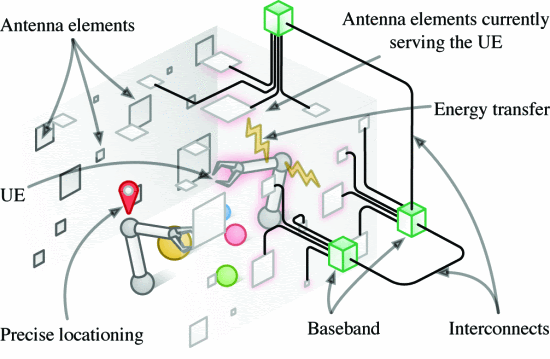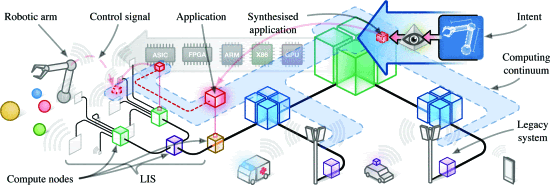If we solve forecasted computing challenges, 6G can transform how we do business, manage and operate infrastructures, and live. 6G technology, combined with intelligent surfaces, can deliver low latency and multi-gigabit connectivity. Large Intelligent Surfaces (LIS) constitute a promising wireless communication paradigm that integrates many antenna elements over the surfaces of manufactured structures. This potential could be transformative in parts of the world where providing access to conventional mobile networks is complicated and expensive.
All 6G systems, including LIS, will require distributed, complex, and coordinated decisions throughout a very heterogeneous and cell-free infrastructure. According to a paper presented at the 2022 1st International Conference on 6G Networking (6GNet), this will “require a fundamentally redesigned software infrastructure accompanied by massively distributed and heterogeneous computing resources, vastly different from current wireless networks.” To address these challenges, researchers propose a 6G Computing Continuum (6GCC) and two research testbeds advance the rate and quality of research.
The evolution of 6G requires a fundamentally redesigned software infrastructure and massive amounts of computing resources to make distributed, complex, and coordinated decisions throughout the whole infrastructure. As noted by the researchers, the 6G Computing Continuum is an end-to-end computing and software platform for realizing large, intelligent surfaces. The two proposed testbeds will address the challenges of shared computational resources in the wireless domain as well as any scalability and global-scale orchestration issues.
The Efficacy of Large Intelligent Surfaces
While the work on 6G has just begun, we know that it will include extreme data rates, latency, dependability, and power consumption requirements. With LIS, many antennas are densely distributed around an area and managed in a distributed, cell-free manner. The concept allows for much larger networks where users can seamlessly move between antenna panels within a city. According to the researchers, “for many emerging use cases for 6G, the number and density of users will potentially be very high, allowing the system to take advantage of its full capacity.” Examples of use cases for this emerging technology include tracking individual goods in warehouses or augmented reality for crowds at sporting events.

An illustrative overview of Large Intelligent Surfaces (LIS). A fictive production space with two robotic arms, connected with LIS, realized with antenna elements on the perimeter of the space.
6G Computing Challenges
LIS deployments will impose extreme requirements on the underlying compute infrastructure. The expected requirements on processing capacity for next-generation technologies will greatly surpass what can be provided today. The authors note that added energy constraints and sustainability goals will make it an even harder problem to solve. 6GCC takes a holistic view of the computing infrastructure needed to support 6G and enables a new generation of services and applications with extreme requirements.

Basic overview of the 6G Computing Continuum (6GCC).
Issues discussed in the paper include Heterogeneity and Orchestration; Scaling to Billions; Availability and Reliability; and Quality-elastic Applications. The authors also outline a 6GCC testbed and a simulator for research. The 6GCC testbed will demonstrate a full-stack end-to-end LIS deployment, with heterogeneous hardware meeting the diverse needs of the system, unified with a computing continuum platform. Due to the complexity and scale of the global 6GCC, it is not feasible to build a physical testbed to demonstrate results on a worldwide scale. For this reason, the authors propose a simulator for SDN-based Extended Network systems that can address the scalability challenges of the end-to-end 6GCC.
6G has emerged to redesign the software infrastructure with appealing features for services in massively heterogeneous wireless environments. In the paper, the authors explore and identify opportunities and challenges in 6GCC for providing reliable, robust, scalable, and end-to-end computing and services. Also noted are future computing and networking research needs, especially concerning LIS and application software design.
View the full-text article on IEEE Xplore. Full article available with purchase or subscription. Contact us to see if your organization qualifies for a free trial.





